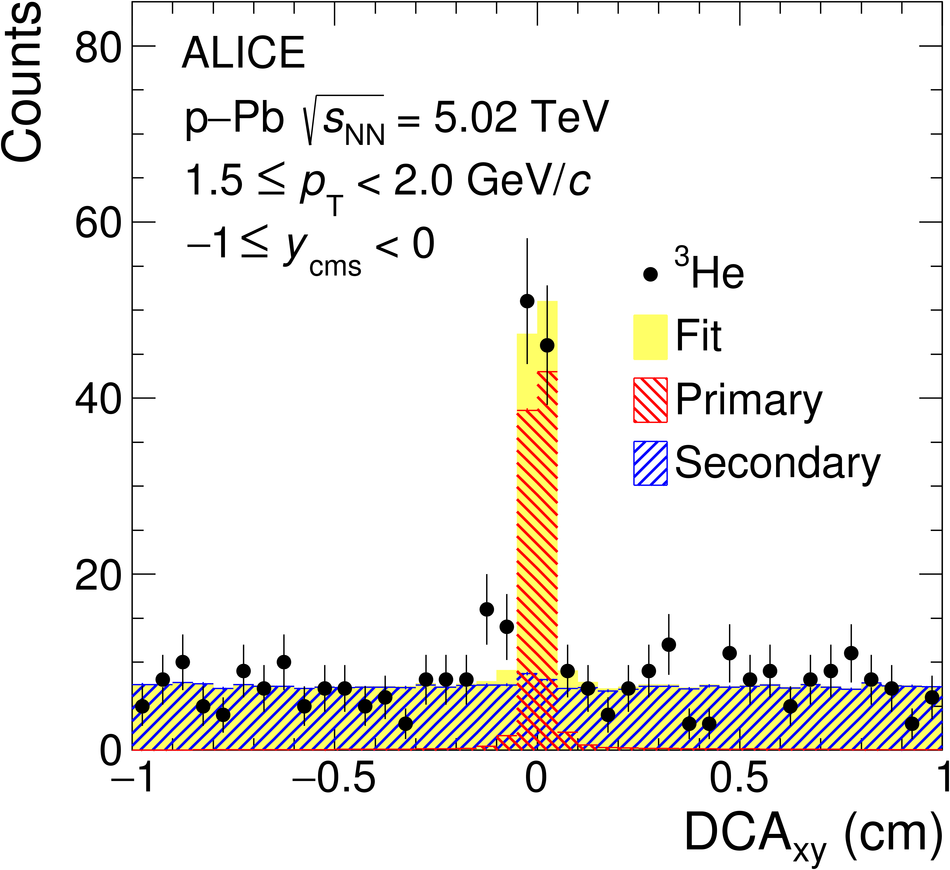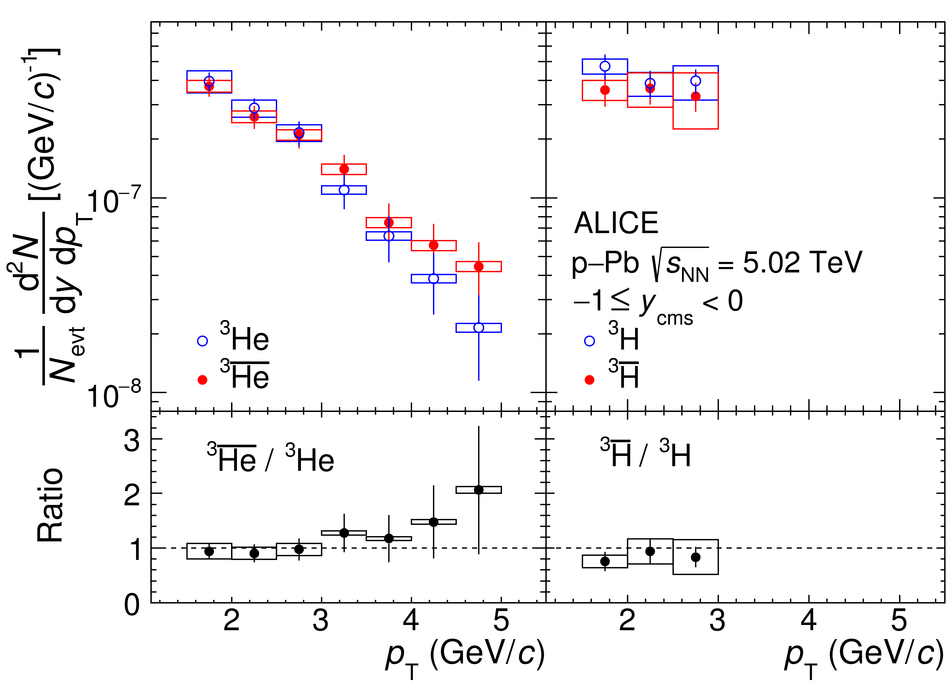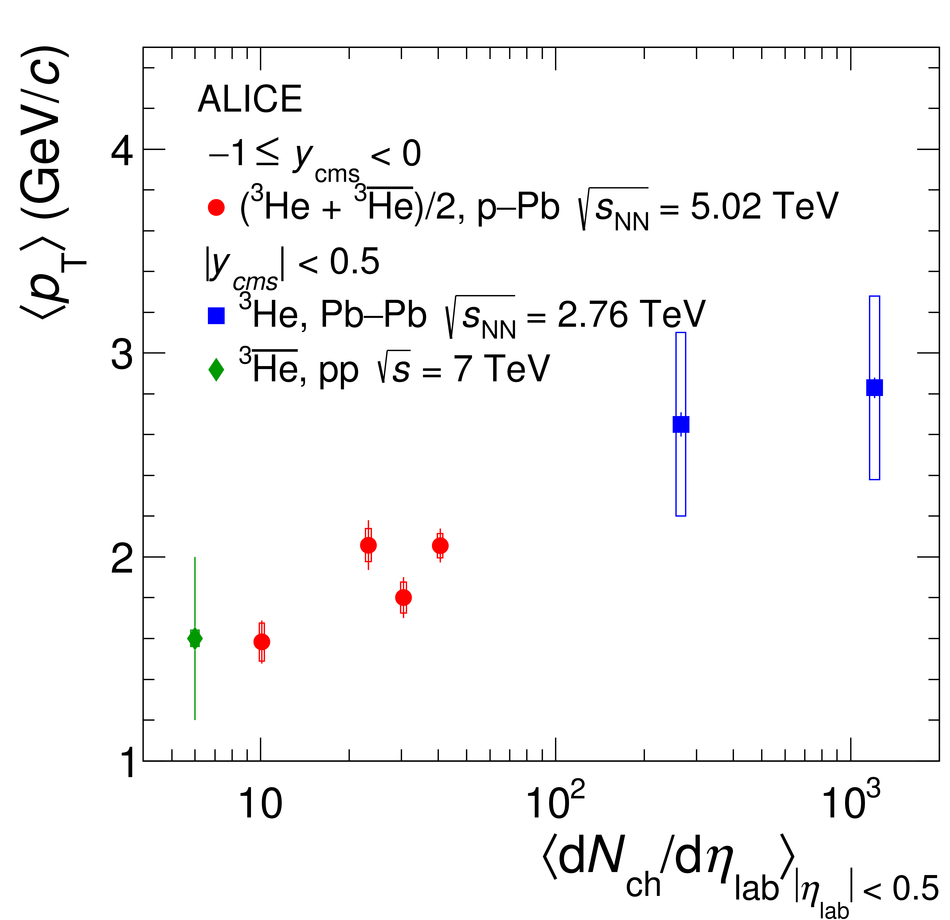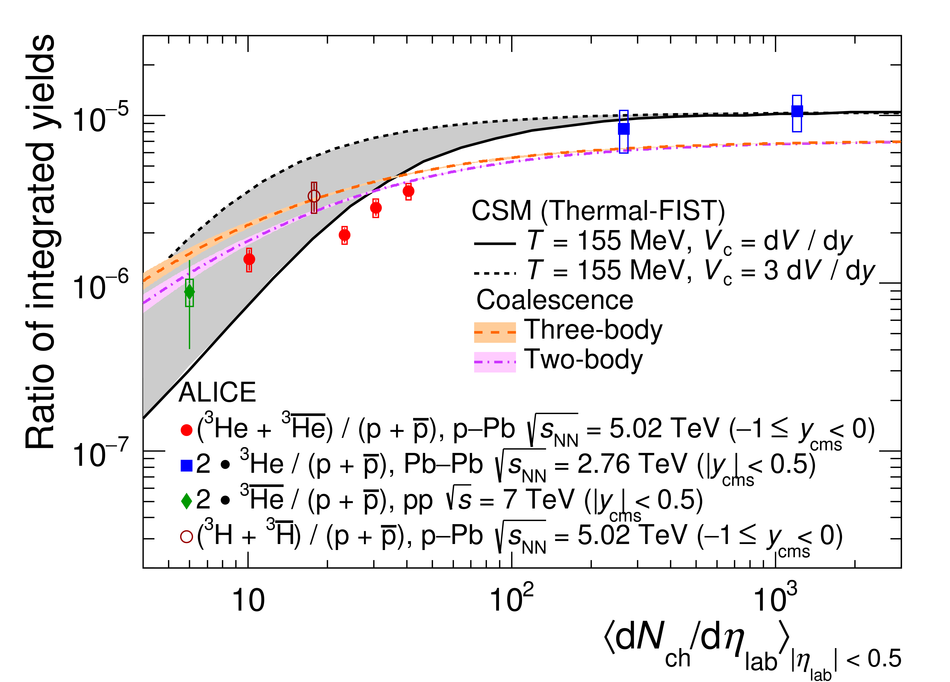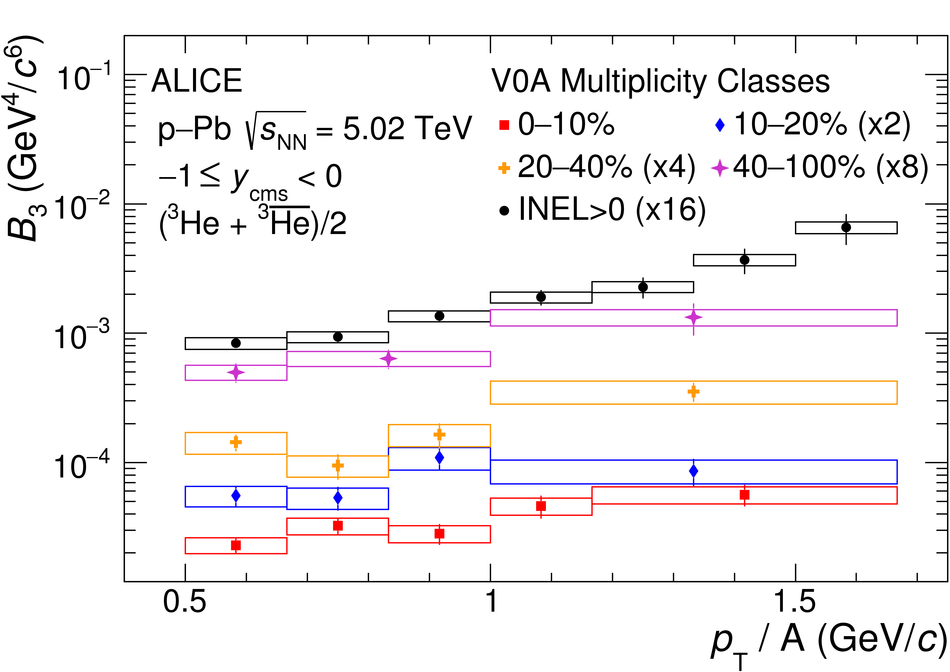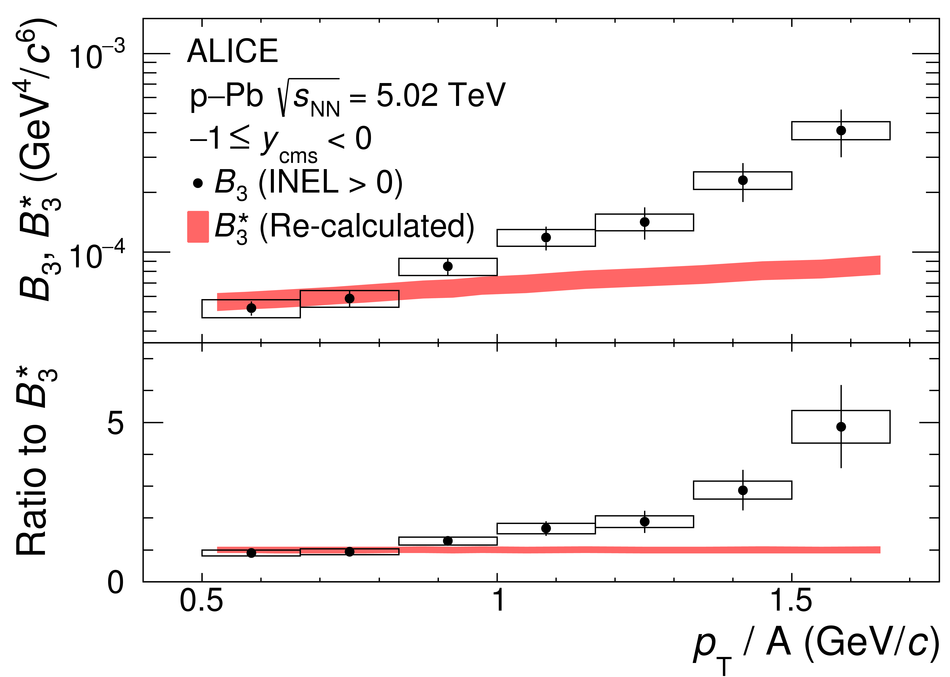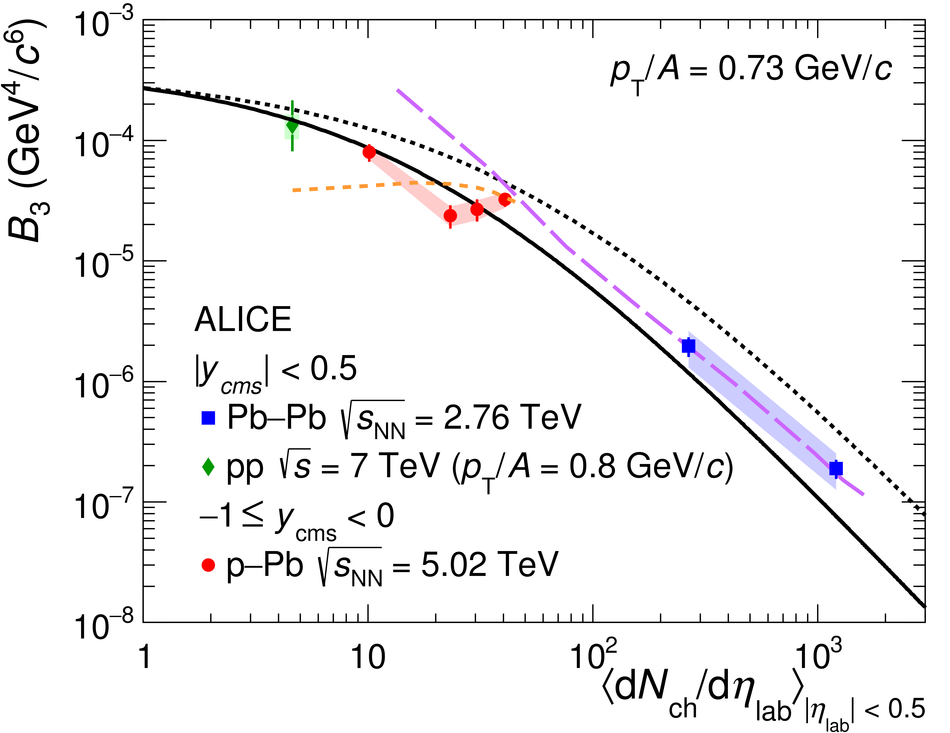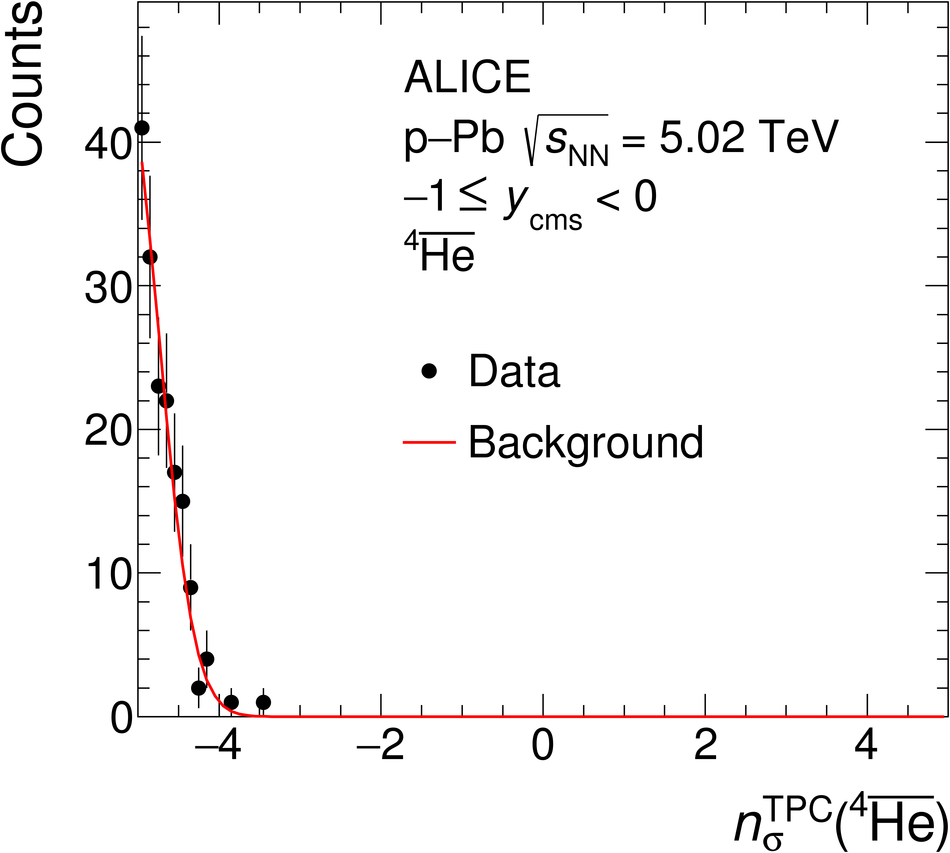The transverse momentum ($p_{\rm{T}}$) differential yields of (anti-)$^3$He and (anti-)$^3$H measured in p-Pb collisions at $\sqrt{s_{\rm{NN}}}$ = 5.02 TeV with ALICE at the Large Hadron Collider (LHC) are presented. The ratios of the $p_{\rm{T}}$-integrated yields of (anti-)$^3$He and (anti-)$^3$H to the proton yields are reported, as well as the $p_{\rm{T}}$ dependence of the coalescence parameters $B_3$ for (anti-)$^3$He and (anti-)$^3$H. For (anti-)$^3$He, the results obtained in four classes of the mean charged-particle multiplicity density are also discussed. These results are compared to predictions from a canonical statistical hadronization model and coalescence approaches. An upper limit on the total yield of $^4\bar{\mathrm{He}}$ is determined.
Phys. Rev. C 101 (2020) 044906
HEP Data
e-Print: arXiv:1910.14401 | PDF | inSPIRE
CERN-EP-2019-246



